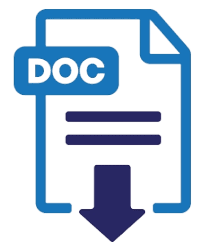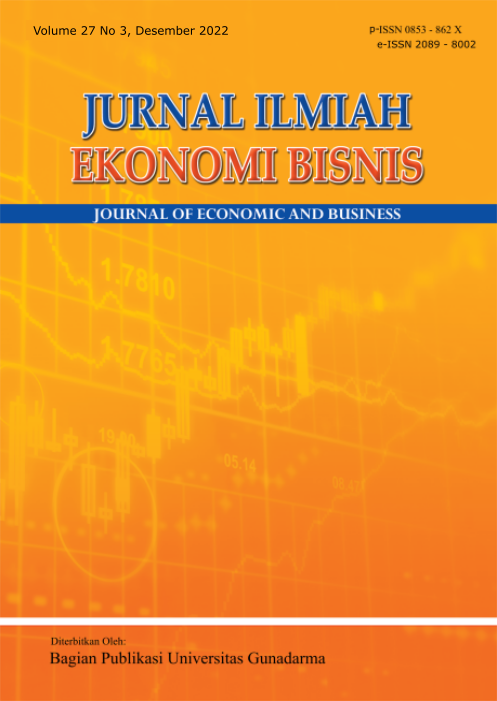HOW TO MINIMIZE RISK: THE IMPLEMENTATION OF PUBLIC SECTOR SERVICES ELECTRONIC PROCUREMENT IN INDONESIA
Faculty of Economics and Business, University of Bengkulu
Indonesia
Faculty of Economics and Business, University of Bengkulu
Indonesia
Abstract
The trend of corruption cases in the types of goods and services procurement cases handled by the Corruption Eradication Commission of the Republic of Indonesia in 2004-2019 shows an increasing number in every year. In certain types of case studies the implementation of e-Procurement with e-Cataloq is proven to play a role in reducing the risk of corrupt practices in public organizations. The objectives of this research are to build an e-Procurement implementation model in Indonesia especially on electronic identity card procurement, identify external factors that encourage individuals to commit fraudulent behavior and the approval of procurement process of government goods and services. We operate a qualitative method with a case study on the implementation of e-Procurement of electronic identity cards. The results of the study explained that the implementation model of the procurement of goods and services using the e-Purchasing method through the e-Catalog mechanism is the best e-Procurement implementation model in the procurement of government goods and services specifically for the case of procurement of electronic identity cards.
Keywords
References
Ajzen, I. (1991). The theory of planned behavior. Organizational Behavior And Human Decision Processes, 50(2), 179-211.doi:10.1016/0749-5978(91)90020-T.
Alatas, S.H. (1987). Korupsi sifat dan fungsi. Jakarta: LP3ES.
Aman, A., & Kasimin, H. (2011). E-procurement implementation: A case of Malaysia Government. Transforming Government: People, Process and Policy, 5(4), 330-344. doi:10.1108/17506161111173586.
Barahona, J.C., & Elizondo, A. M. (2014). Introducing a disruptive service innovation: a national dilemma in e-procurement. Management Decision, 52(9), 1782-1800. doi:10.1108/MD-09-2013-0497.
Boer, L. D., Harink, J., & Heijboer, G. (2002). A conceptual model for assessing the impact of electronic procurement. European Journal of Purchasing & Supply Management, 8(1), 25-33.doi:10.1016/S0969-7012(01)00015-6.
Caiden, G. E. (2014). Toward a general theory of official corruption. Asian Journal of Public Administration, 10(1), 3-26. doi:10.1080/02598272.1988.10800195.
Creswell, J. W. (2014). Research design - qualitative, quantitative, and mixed approaches. research design qualitative quantitative and mixed methods approaches. California: SAGE Publications.
Croom, S., & Brandon-jones, A. (2007). Impact of e-procurement : experiences from implementation in the UK public sector. Journal of Purchasing & Supply Management, 13(4), 204-303. doi:10.1016/j.pursup.2007.09.015.
Croom, S., & Johnston, R. (2003). E-service : enhancing internal customer service through e‐procurement. International Journal of Service Industry Management, 14(5), 539-555. doi:10.1108/09564230310500219.
Fee, A. E. R., & Mcllroy, J. (1998). European Union public procurement policy and electronic commerce: problems and opportunities. European Business Review, 98(5), 252–259.doi:10.1108/09555349810231726.
Gunasekaran, A., & Ngai, E. W. T. (2008). Adoption of e-procurement in Hong Kong : An empirical research. International Journal of Production Economics, 113(1), 159-175. doi:10.1016/j.ijpe.2007.04.012.
Hui, W. S., Othman, R., Omar, N. H., Rahman, R. A., & Haron, N. H. (2011). Procurement issues in Malaysia. International Journal of Public Sector Management, 24(6), 567–593. doi:10.1108/09513551111163666.
Knudsen, D. (2003). Aligning corporate strategy, procurement strategy and e-procurement tools. International Journal of Physical Distribution & Logistics Management, 33(8), 720-734.doi:10.1108/09600030310502894.
Kural, S., & Alsac, U. (2006). Public procurement procedures in Turkey. Journal of Public Procurement, 6(1/2), 100-129. doi:10.1108/JOPP-06-01-02-2006-B005.
Liao, S-H., Cheng, C-H., Liao, W-B., & Chen, I-L. (2003). A web-based architecture for implementing electronic procurement in military organisations. Technovation, 23(6), 521-532. doi.org/10.1016/S0166-4972(02)00006-8.
Liao, T.S., Wang, M.T., & Tserng, H. P. (2002). A framework of electronic tendering for government procurement: A lesson learned in Taiwan. Automation in Construction, 11(6), 731–742. doi:10.1016/S0926-5805(02)00013-4.
Lincoln, Y. S., & Guba, E.G. (1985). Naturalistic inquiry. London: SAGE Publications.
Neupane, A., Soar, J., & Vaidya, K. (2012). Evaluating the anti-corruption capabilities of public eprocurement in a developing country. Electronic Journal of Information Systems in Developing Countries, 55(1), 1–17. doi:10.1002/j.1681-4835.2012.tb00390.x.
Mora-monge, C. A., Quesada, G., González, M. E., Mueller, J., & Mueller, R. (2010). Effective benchmarking of innovation adoptions a theoretical framework for e-procurement technologies. Benchmarking: An International Journal, 17(4), 472-490. doi:10.1108/14635771011060558.
Walker, H., & Harland, C. (2008). E-procurement in the United Nations: Influences, issues and impact. International Journal of Operations and Production Management, 28(9), 831–857. doi.org/10.1108/01443570810895276.


